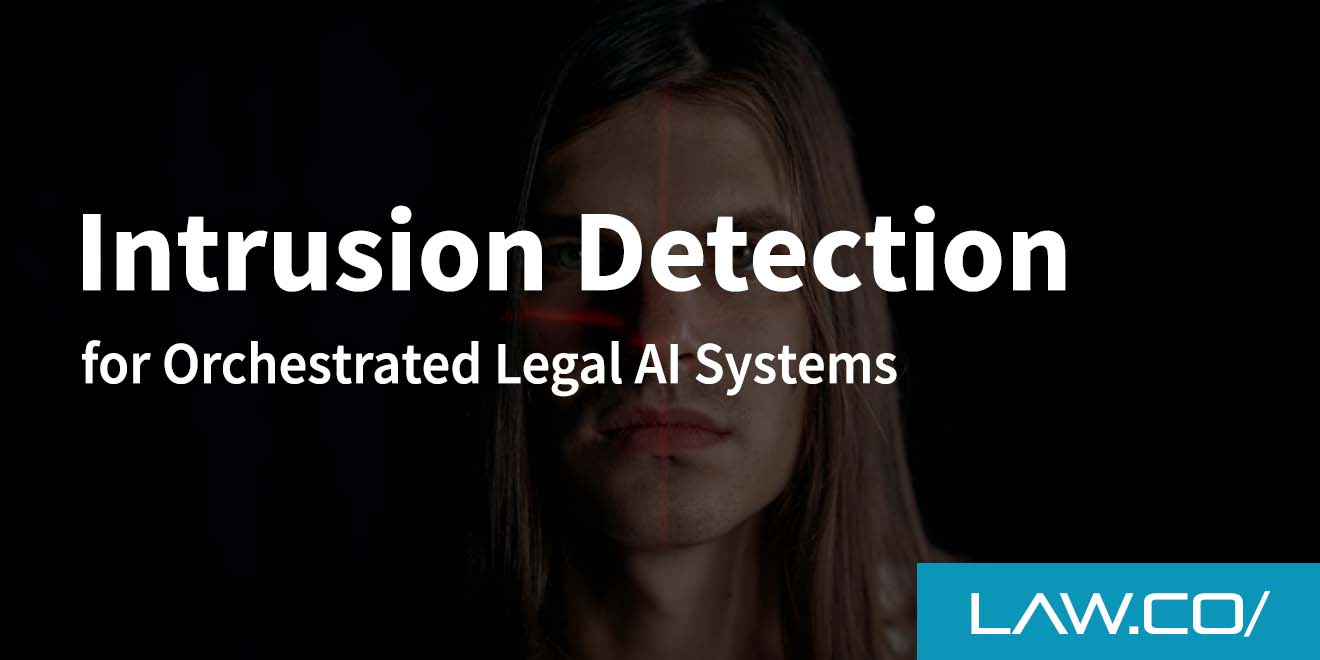

Packaging and Versioning Legal Agent Chains with Custom Executors
Agent chains are marching into the legal world with the energy of a fresh associate on the first Monday of the month, and that is exactly why packaging and versioning matter. When the chain that drafts, cites, redlines, and files relies on multiple moving parts, predictability stops being optional and becomes policy.
This guide explains how to package those chains, version them with care, and plug in custom executors without chaos. It is written for a technical audience that serves AI for lawyers, with a tone that keeps you awake without spilling your coffee.
What Exactly Is a Legal Agent Chain
A legal agent chain is a sequence of specialized components that pass work along, each component trained or tuned for a distinct task. One might interpret a prompt, another fetches precedent, a third checks conflicts, and a fourth formats the output so it meets court rules. These components are stitched together with routing logic and shared context.
Packaging gives you a way to ship that bundle intact. Versioning gives you a way to evolve it without breaking everything downstream. The result should feel like software you can trust, not a science project in a hoodie.
Why Packaging Matters More Than You Think
In law, surprises belong in novels, not build pipelines. Packaging creates a stable artifact that your infrastructure can deploy repeatedly, whether on a workstation, a private cluster, or a locked-down enclave. The dominant choices are language-native packages and container images. Language packages give speed and easy integration with tooling.
Containers deliver isolation and reproducibility, which supports audits. If you want to sleep at night, you will lock your dependencies, pin system libraries, and capture a manifest that says exactly what is inside. When someone asks what changed, you should have a precise answer.
The Heart of Reproducibility
Deterministic builds are the quiet heroes of compliance. Build the same source twice, get the same result twice. Achieve that by pinning dependency versions, avoiding network calls during builds, and recording hashes of large assets such as embeddings or reference corpora.
Capture a software bill of materials that lists each component and its origin. Keep the SBOM next to the artifact so it travels with the package. When a vulnerability appears in a transitive dependency, your security team will find it quickly. When an opposing expert challenges the reliability of your process, you will have receipts.
Containers Versus Language Packages
If you operate in multiple languages, or if your executors need system-level tools, containers are the most reliable envelope. They wrap the runtime, system libraries, and your chain into a single object that orchestrators can schedule with confidence. If you run in a single language and performance is critical, language packages can reduce overhead and startup times.
Many teams combine both approaches, publishing a language package for developers and a container for production. The key is consistency. Whatever you ship to production should be the same artifact you tested and signed.
Versioning Strategies That Survive Contact With Reality
Version numbers are promises. A good scheme tells operators when they can expect safety and when they should expect change. Semantic versioning works well for agent chains when you interpret it strictly. A major version signals a behavioral change that may alter outputs, like a new routing policy.
A minor version adds features or non-breaking nodes. A patch version fixes defects without changing observable behavior. Tie versions to immutable source commits and signed build metadata. When you compare two versions, you should be able to trace every difference back to code, data, or configuration.
Versioning Models, Data, and Prompts
Agent behavior depends on more than code. Model weights, retrieval corpora, system prompts, and tool definitions also shape outcomes. Treat each of these as versioned assets with clear provenance. Store prompts in version control as plain text files. Hash large files, then record those hashes in a lockfile that your build system consumes.
If a retrieval index is rebuilt, bump its version and note the document cutoff date. That small detail saves hours when someone asks why a citation did not include last month’s opinion. Behavior without provenance is guesswork.
Change Without Collateral Damage
Backward compatibility is not glamorous, yet it is the difference between smooth upgrades and weekend fire drills. When you revise a chain, keep previous interfaces available for a grace period. Use adapters to translate between old and new payloads. Allow parallel runs so you can compare outputs across versions.
Promote a new version only after it clears thresholds for accuracy, latency, and cost. If a breaking change is unavoidable, publish a migration note that shows consumers exactly what to adjust. People forgive change. They do not forgive surprises.
Custom Executors, The Brains Between The Links
Executors are the components that do actual work inside the chain. In legal workflows they may parse docket PDFs, convert citations to a firm style, or call a proprietary database. A robust executor honors strict contracts. Inputs and outputs have explicit schemas, including error fields and confidence scores.
Executors log structured events and include trace identifiers so you can follow a request across the entire chain. They are resource-aware, with timeouts and memory limits, and they degrade gracefully when a downstream tool is slow or unavailable. Elegant failure is still elegance.
Designing Executor Interfaces That Age Well
Think of executor interfaces as a handshake that never wobbles. Define inputs with typed fields, not free text, and include room for future expansion through optional properties. Include a version for the interface itself, separate from the executor’s version.
That way you can ship improvements internally without forcing everyone to update their clients. Validate payloads at the boundary and refuse ambiguous requests. Give each error a code that carries meaning, not just a stack trace. Clear contracts reduce meetings, which is a win for morale and billable work.
Observability Without Guesswork
Good observability turns debugging into procedure rather than folklore. Each executor should emit metrics for latency, throughput, and error rates. Tracing should stitch those events into a single timeline for each request. Logs belong in a central location with retention policies that match your compliance posture.
Redaction rules should remove sensitive content at the source. If a privacy policy requires purging after a set period, automate it. When an auditor asks how the system behaved on a specific date, you should retrieve that story in minutes, not days.
Access Control and Secrets Management
Secrets deserve respect. Executors should pull credentials from a vault, not from environment variables checked into scripts. Rotate keys regularly, scope permissions to the minimum required, and monitor usage. For agents that call external APIs, isolate tokens per environment and per service.
That way a breach in one place does not open the entire house. Document which executors can reach which resources. When people change roles, an access review should confirm that privileges follow policy, not convenience.
Security in the Supply Chain
Your chain is only as trustworthy as its least trustworthy input. Sign artifacts at build time and verify signatures at deploy time. Enforce source verification for third party packages and prefer mirrors you control. Pin base container images by digest, not by tag. Run vulnerability scans on both the artifact and the running service.
Keep a short list of approved licenses to avoid surprises in commercial work. When a CVE lands, you need a map that shows where the risk lives and a playbook that says how to fix it.
Testing That Proves What You Think It Proves
Unit tests keep executors honest. Contract tests keep integrations honest. Behavioral tests keep the entire chain honest. For language models, create a frozen evaluation set that reflects the kinds of prompts and documents you expect in production. Keep another set that evolves as your scope expands.
Run both sets on every change and store the results. If an output is inherently non-deterministic, measure distributions rather than single answers and define thresholds. Tests are not about perfection. They are about confidence with proof attached.
Deployment Without Drama
Treat deployment as a sequence you can describe to a colleague without waving your hands. Promote artifacts from development to staging to production, never rebuilding in between. Use configuration to switch model endpoints, data sources, or feature toggles per environment.
Enable canary releases so a small slice of traffic tries the new version first. Measure before and after, then proceed or roll back quickly. A rollback is not an admission of defeat. It is a sign that your process values stability over pride.
Rollbacks That Actually Roll Back
A rollback should return both code and behavior to a known good state. That means keeping previous versions of models, prompts, and indexes available. Keep an immutable record of configuration, including secret references and feature flags. When you press the button, the system should not guess which pieces belong together.
It should restore the exact set. Afterward, file a short incident note that records what failed, how you detected it, and how you prevented recurrence. In the future you will be grateful.
Documentation People Will Actually Read
Documentation succeeds when it answers the exact questions that operators and reviewers ask. Start with a one-page overview that explains what the chain does, which inputs it accepts, and which outputs it produces. Link to a quick start for running it locally.
Include a table that lists versions of code, prompts, models, and data artifacts for each release. Write release notes that highlight functional changes and known limitations. Keep diagrams simple, with boxes for executors and arrows for data flow. If someone gets lost, your docs should pull them back.
Governance and Retention
Legal work travels with rules about data retention, deletion, and transfer. Your agent chain should enforce those rules automatically. Set retention windows for logs, traces, and intermediate outputs. Make sure redaction happens before storage when required.
Track who approved a new version and when it went live. Keep a record of all external services the chain touches. Governance is not decoration. It is the difference between a helpful tool and a system that creates risk.
Cost and Performance, The Twins You Must Manage
Agent chains are elastic. Costs rise with traffic, token usage, and model choice. Performance depends on batching, caching, and smart routing. Measure both at every stage. Use a cost budget per environment and alert when projections jump.
Cache common lookups, precompute embeddings for frequent queries, and select smaller models for simple steps. If a large model is essential, isolate it behind a clear contract so you can swap providers without rewriting the chain. Save heroics for trials, not for monthly invoices.
Culture, The Invisible Framework
Processes will falter without the right habits. Encourage small, frequent releases that reduce risk. Treat postmortems as learning tools rather than blame rituals. Invite review from privacy and security early in the design, not after launch. Celebrate boring deployments. The more predictable your pipeline becomes, the more time your team can spend on quality and insight. Technology is a tool. Culture is the hand that wields it.
Conclusion
Packaging and versioning legal agent chains is less about flash and more about fidelity. When you decide on stable artifacts, strict versioning, and clean contracts for custom executors, you create a system that behaves the same way tomorrow as it did today. That stability makes room for responsible improvement.
Add supply chain security and observability, and you can show not only that the system works, but how and why. The result is technology that respects the precision of law while delivering the speed of modern software, which is exactly the balance the field deserves.

%201.svg)










